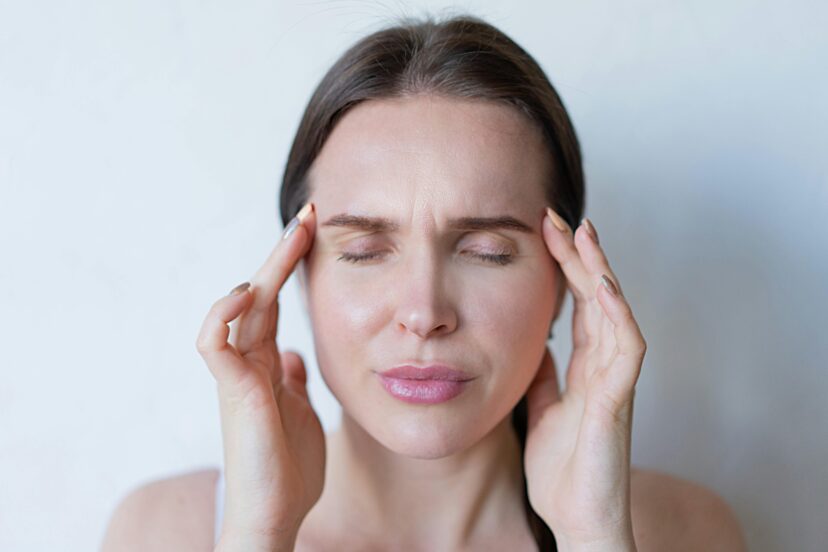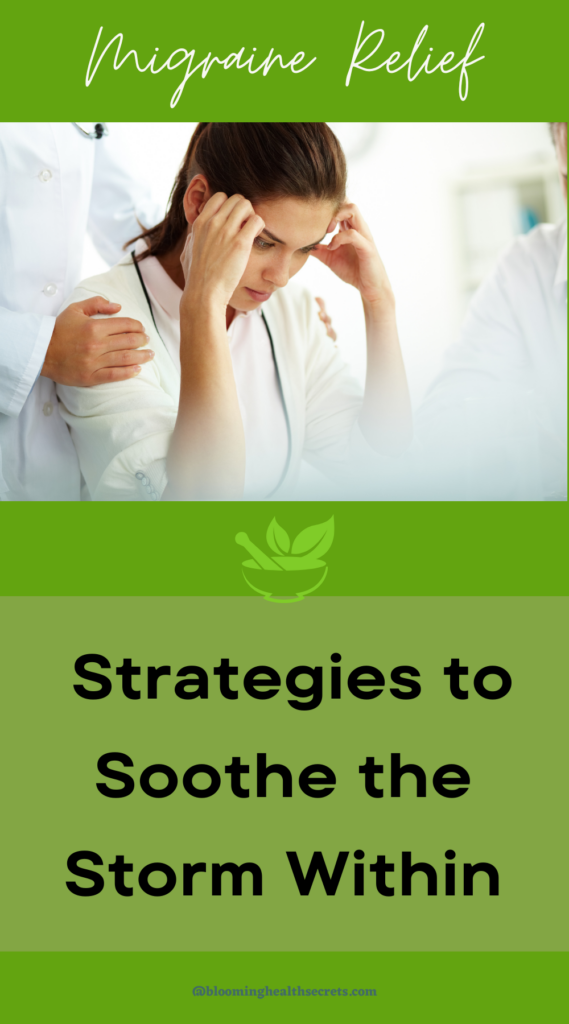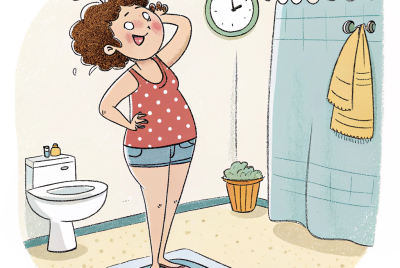Migraine Relief: Strategies to Soothe the Storm Within
Are migraines disrupting your life’s rhythm, leaving you in the dark?
It’s time to shed some light on effective relief strategies to calm the storm within.
In this comprehensive guide, we’ll explore various techniques to alleviate migraine symptoms and regain control of your life. From lifestyle adjustments to alternative therapies, we’ve got you covered. Let’s embark on the journey to find migraine relief together.
Understanding Migraines: Unraveling the Mystery
Before we dive into relief strategies, let’s unravel the mystery of migraines and understand their impact:
- What is a Migraine?:
A migraine is more than just a headache—it’s a neurological condition characterized by intense throbbing pain, usually on one side of the head. Other symptoms may include nausea, vomiting, sensitivity to light and sound, and visual disturbances known as aura. - Triggers and Patterns:
Migraines can be triggered by various factors, including stress, hormonal changes, certain foods, environmental factors, and sleep disturbances. Understanding your triggers and patterns can help you manage migraines more effectively. - Impact on Daily Life:
Migraines can significantly impact your daily life, interfering with work, social activities, and overall well-being. Managing migraines requires a multifaceted approach that addresses both acute symptoms and preventive measures.
Now that we have a better understanding of migraines, let’s explore effective relief strategies.
Immediate Migraine Relief Measures: Calming the Storm
When a migraine strikes, these immediate relief measures can help alleviate symptoms and provide comfort:
- Find a Quiet, Dark Space:
Sensory stimuli can exacerbate migraine symptoms. Find a quiet, dark space to rest and minimize exposure to light and noise. - Apply Cold Compresses:
Applying a cold compress or ice pack to the forehead or temples can help numb the pain and reduce inflammation. Wrap the compress in a towel to avoid direct skin contact. - Stay Hydrated:
Dehydration can exacerbate migraine symptoms. Drink plenty of water to stay hydrated and replenish lost fluids. - Practice Relaxation Techniques:
Techniques such as deep breathing, meditation, and progressive muscle relaxation can help reduce stress and tension, which may exacerbate migraines.
Lifestyle Adjustments: Building a Foundation for Migraine Relief
In addition to immediate relief measures, making lifestyle adjustments can help prevent migraines and reduce their frequency and severity:
- Establish Regular Sleep Patterns:
Poor sleep quality and irregular sleep patterns can trigger migraines. Aim for seven to nine hours of quality sleep each night and establish a consistent sleep schedule. - Manage Stress:
Stress is a common migraine trigger. Incorporate stress-reduction techniques such as yoga, tai chi, or mindfulness meditation into your daily routine to promote relaxation and reduce stress levels. - Stay Active:
Regular physical activity can help reduce the frequency and severity of migraines. Engage in aerobic exercise, such as walking, yoga, swimming, or cycling, for at least 30 minutes on most days of the week. - Maintain a Healthy Diet:
Certain foods and beverages, such as caffeine, alcohol, processed foods, and artificial sweeteners, may trigger migraines in some individuals. Keep a food diary to identify potential triggers and minimize their consumption.
Alternative Therapies: Exploring Additional Options
In addition to conventional treatments, several alternative therapies may offer relief for migraines:
- Acupuncture:
Acupuncture involves the insertion of thin needles into specific points on the body to alleviate pain and promote relaxation. Some studies suggest that acupuncture may be effective in reducing migraine frequency and severity. - Herbal Supplements:
Certain herbal supplements, such as feverfew, butterbur, and riboflavin (vitamin B2), have been studied for their potential role in migraine prevention. However, more research is needed to confirm their effectiveness and safety. - Biofeedback:
Biofeedback is a mind-body technique that teaches individuals to control physiological processes such as heart rate, muscle tension, and skin temperature. Biofeedback training may help individuals reduce the frequency and severity of migraines by learning to recognize and control migraine triggers. - Cognitive Behavioral Therapy (CBT):
CBT is a form of psychotherapy that helps individuals identify and change negative thought patterns and behaviors. It may be beneficial for individuals with migraines by helping them cope with stress, manage pain, and develop healthy coping strategies.
Seeking Professional Help: When to Consult a Healthcare Provider
While lifestyle adjustments and alternative therapies may provide relief for some individuals, it’s essential to seek medical attention if you experience:
- Frequent or severe migraines that interfere with daily activities
- Migraines accompanied by neurological symptoms such as weakness, numbness, or difficulty speaking
- New-onset migraines or changes in migraine patterns
- Migraines that do not respond to over-the-counter medications or self-care measures
Your healthcare provider can help diagnose migraines, rule out underlying conditions, and recommend appropriate treatment options, including prescription medications, preventive therapies, and lifestyle modifications.
In Summary: Navigating the Path to Migraine Relief
In conclusion, migraines can be debilitating, but effective relief is within reach.
By implementing a combination of immediate relief measures, lifestyle adjustments, and alternative therapies, you can manage migraines and reclaim control of your life.
Remember to listen to your body, identify your triggers, and seek professional help when needed to find the relief you deserve.
Frequently Asked Questions (FAQs) About Migraine Relief:
- Are over-the-counter medications effective for migraine relief?
Over-the-counter medications such as nonsteroidal anti-inflammatory drugs (NSAIDs) and acetaminophen can provide relief for mild to moderate migraines. However, for severe or frequent migraines, prescription medications may be necessary. - Can hormonal changes affect migraine patterns?
Yes, hormonal changes, such as those associated with menstruation, pregnancy, or menopause, can trigger migraines in some individuals. Hormonal therapies or lifestyle adjustments may help manage migraines related to hormonal fluctuations. - What role does hydration play in migraine prevention?
Dehydration can trigger migraines in some individuals. It’s essential to stay hydrated by drinking plenty of water throughout the day, especially during hot weather or physical activity. - Are there specific dietary changes that can help prevent migraines?
Some individuals find relief from migraines by avoiding certain trigger foods, such as caffeine, alcohol, aged cheeses, and processed foods containing artificial additives. Keeping a food diary can help identify potential triggers and guide dietary modifications. - Is it possible to prevent migraines entirely?
While it may not be possible to prevent migraines entirely, implementing lifestyle adjustments, identifying triggers, and seeking appropriate medical treatment can significantly reduce their frequency and severity, allowing for better management and improved quality of life.
References:
- American Migraine Foundation (AMF) Guidelines (2019):
The AMF provides evidence-based guidelines for the acute treatment of migraines. These guidelines recommend the use of triptans and nonsteroidal anti-inflammatory drugs (NSAIDs) as first-line treatments for moderate to severe migraines. - The Migraine Action Plan for Prevention and Management (MAP) Study (2017):
This study evaluated the effectiveness of a comprehensive migraine action plan in reducing migraine frequency and severity. The MAP included lifestyle modifications, stress management techniques, and preventive medications. Results showed a significant reduction in migraine frequency and improvement in quality of life among participants who followed the action plan. - The American Headache Society (AHS) Guidelines (2020):
The AHS provides evidence-based guidelines for the preventive treatment of migraines. These guidelines recommend the use of medications such as beta-blockers, antiepileptic drugs, and antidepressants for individuals with frequent or severe migraines. - The Chronic Migraine Epidemiology and Outcomes (CaMEO) Study (2015):
This large-scale epidemiological study aimed to understand the burden of chronic migraines and factors associated with their development and progression. Findings from the CaMEO study highlighted the significant impact of chronic migraines on quality of life and healthcare utilization. - The Migraine Genetics Consortium (2016):
This international collaboration aimed to identify genetic factors associated with migraines. Genome-wide association studies (GWAS) conducted by the consortium identified several genetic variants linked to migraines, providing insights into the biological mechanisms underlying the condition. - The American Academy of Neurology (AAN) Guidelines for Behavioral and Physical Treatments for Migraine Prevention (2013):
These guidelines provide recommendations for non-pharmacological treatments for migraine prevention, including cognitive behavioral therapy, biofeedback, relaxation techniques, and acupuncture. - The Migraine Disability Assessment (MIDAS) Questionnaire (2001):
The MIDAS questionnaire is a widely used tool for assessing the impact of migraines on daily functioning and quality of life. It helps healthcare providers evaluate the severity of migraines and monitor treatment effectiveness over time. - The Women’s Health Study (WHS) (2005):
This large-scale prospective cohort study investigated the association between various lifestyle factors and the risk of migraines in women. Findings from the WHS suggested that regular exercise, a healthy diet, and maintaining a healthy weight may reduce the risk of migraines in women. - The PREEMPT Clinical Trials (2010):
The PREEMPT trials evaluated the safety and efficacy of onabotulinumtoxinA (Botox) injections for the preventive treatment of chronic migraines. Results from these trials demonstrated that Botox injections significantly reduced the frequency and severity of migraines and improved quality of life in individuals with chronic migraines. - The Migraine Treatment Optimization Questionnaire (mTOQ) Study (2014):
This study assessed treatment patterns and outcomes among individuals with migraines and aimed to identify factors associated with treatment success or failure. Findings from the mTOQ study highlighted the importance of individualized treatment approaches and patient education in optimizing migraine management.
These studies and guidelines provide valuable insights into the prevention, management, and treatment of migraines, informing evidence-based approaches to improve outcomes and quality of life for individuals living with this debilitating condition.






